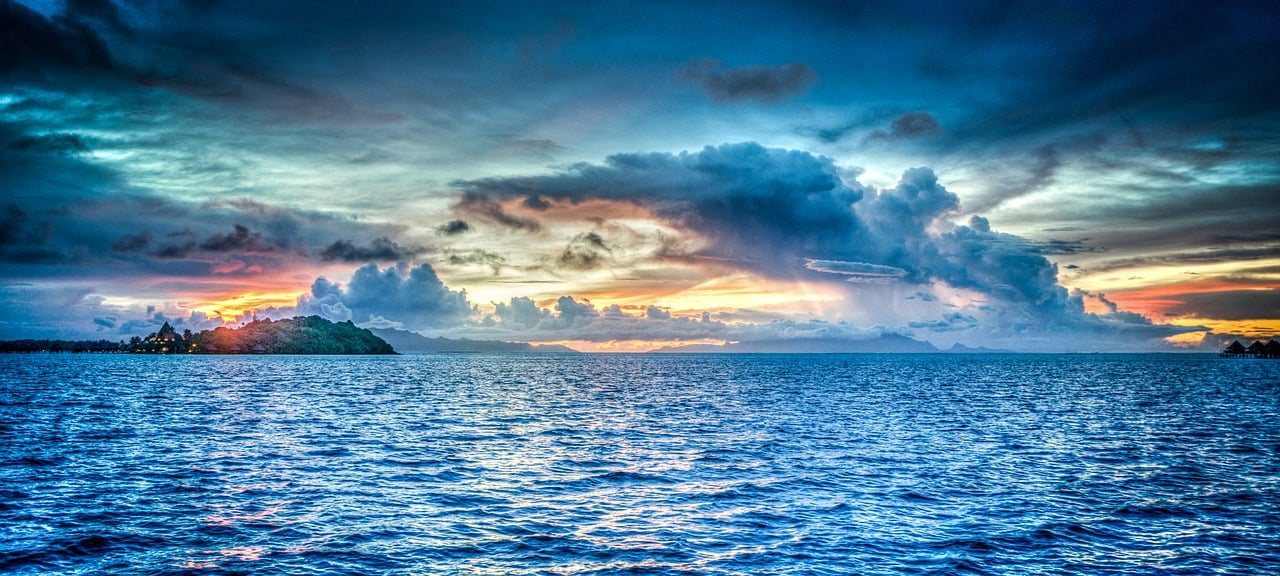Climate change has long been believed to be affecting our oceans and the marine life residing in them. Scientists blame the warming ocean temperatures for many things, including coral bleaching and melting glaciers on the North and South poles. Now scientists believe the color of the oceans could change by the end of the century — unless we take the necessary measures to slow the process of global warming.
The new study suggests the subtropical areas which are already very blue will become even more blue in the future, reflecting the loss of phytoplankton in the areas. However, the areas around the poles could become a deeper green color if the warmer temperatures increase the amount of phytoplankton currently there. The study’s findings were published in the journal Nature Communications.
Scientists came to these conclusions based on measurements of the oceans’ colors taken via satellites since the 1990s. Using this data, they estimated the levels of chlorophyll in the oceans and tried to determine how they were affected by climate change and weather phenomena like El Niño or La Niña events. They decided not to estimate the amount of chlorophyll directly, but rather, to measure it based on the presence of phytoplankton in the oceans by looking at the amount of light they reflect.
They used satellite data to predict changes in temperature and acidification in the seas, deriving information about phytoplankton, like how they feed, how they grow and what feeds on them. They then added this information to their previous model, which looked at the ocean’s currents.
“The model suggests the changes won’t appear huge to the naked eye, and the ocean will still look like it has blue regions in the subtropics and greener regions near the equator and poles,” lead author Stephanie Dutkiewicz of MIT’s Department of Earth, Atmospheric, and Planetary Sciences and the Joint Program on the Science and Policy of Global Change said in a statement. “That basic pattern will still be there. But it’ll be enough different that it will affect the rest of the food web that phytoplankton supports.”
“An El Niño or La Niña event will throw up a very large change in chlorophyll because it’s changing the amount of nutrients that are coming into the system,” Dutkiewicz added. “Because of these big, natural changes that happen every few years, it’s hard to see if things are changing due to climate change, if you’re just looking at chlorophyll.”
Ocean temperatures rise by 4.8 degrees Fahrenheit in the given timeline, which means the populations of phytoplankton are expected to increase even more in the polar regions. As a result, researchers expect the oceans to change colors, becoming deeper blue and deeper green by the end of the century. Sunlight also contributes as it interacts with water molecules, hitting the “bluer” color of the spectrum.
Dutkiewicz believes the oceans will change color by the end of the century, amounting to as much as a 50% difference.
“It could be potentially quite serious,” Dutkiewicz added, referring to the change in color in the oceans. “Different types of phytoplankton absorb light differently, and if climate change shifts one community of phytoplankton to another, that will also change the types of food webs they can support. “





